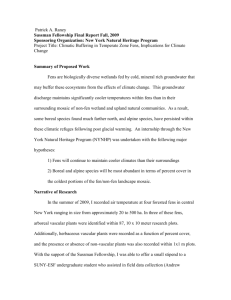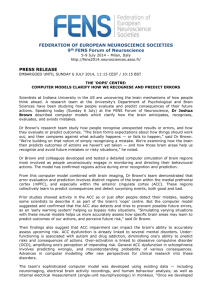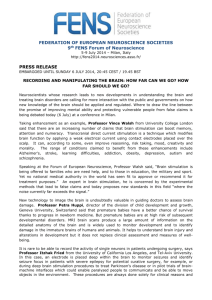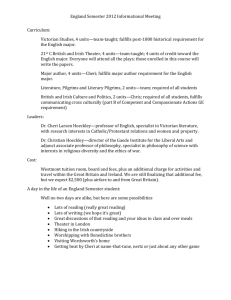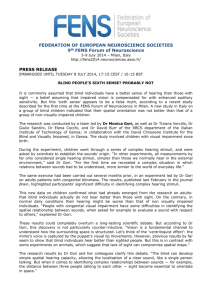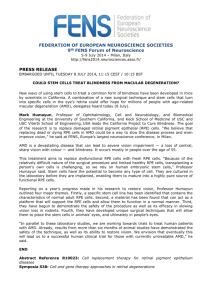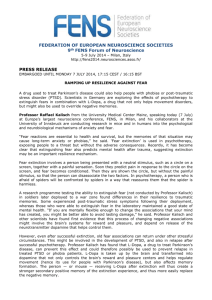The Thatched Cottage Restaurant
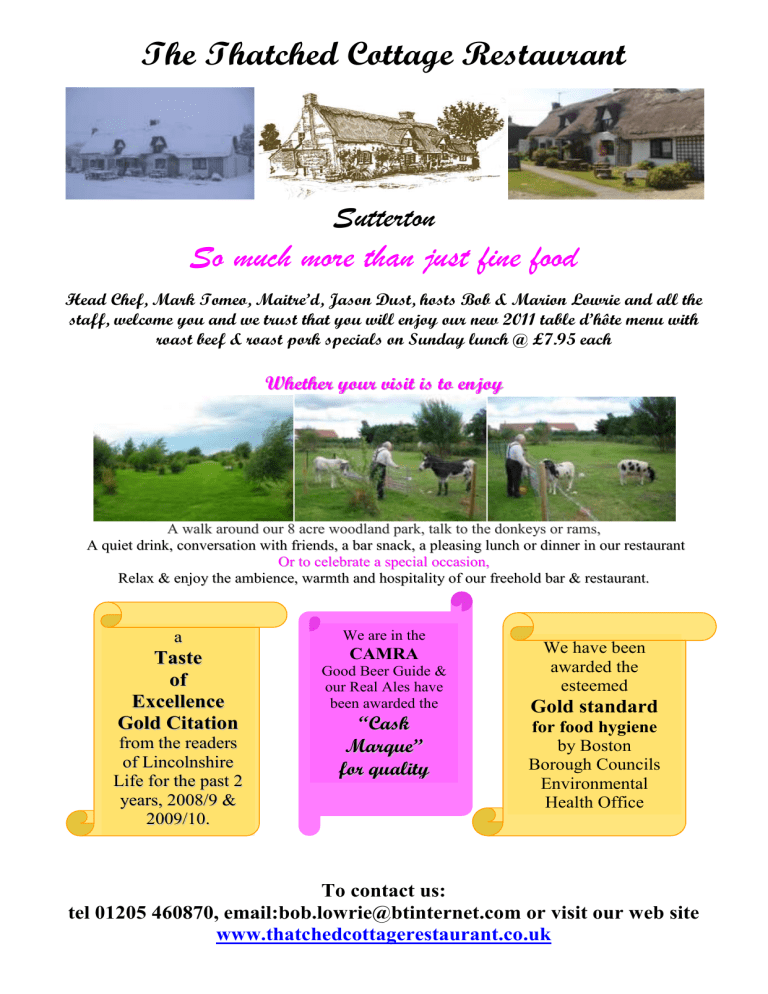
The Thatched Cottage Restaurant
Sutterton
So much more than just fine food
Head Chef, Mark Tomeo, Maitre’d, Jason Dust, hosts Bob & Marion Lowrie and all the staff, welcome you and we trust that you will enjoy our new 2011 table d’hôte menu with roast beef & roast pork specials on Sunday lunch @ £7.95 each
W h e e t t h e e r r y o u r r v i i s i i t t i i s t t o e e n j j o y
A w a l l k a r r o u n d o u r r 8 a c r r e w o o d l l a n d p a r r k , , t t a l l k t t o t t h e d o n k e y s s o r r r r a m s s , ,
A q u i i e t t d r r i n k , c o n v e r s a t i o n w i i t t h f f r i e n d s , a b a r r s n a c k , a p l l e a s s i i n g l u n c h o r r d i n n e r i i n o u r r r e s s t t a u r r a n t t
O r r t t o c e l l e b r r a t t e a s p e c i i a l l o c c a s s i i o n , ,
R e l l a x & e n j j o y t t h e a m b i i e n c e , , w a r r m t t h a n d h o s s p i i t t a l l i i t t y o f f o u r r f f r r e e h o l l d b a r r & r r e s s t t a u r r a n t t .
.
a
T a s s t t e o f f
E x c e l l l l e n c e
G o l l d C i i t t a t t i i o n f f r r o m t t h e r r e a d e r r s s o f f L i i n c o l l n s s h i i r r e
L i i f f e f f o r r t t h e p a s t t 2 y e a r r s s , , 2 0 0 8 / / 9 &
2 0 0 9 / / 1 0 .
.
We are in the
CAMRA
Good Beer Guide & our Real Ales have been awarded the f f
M o r r
“ C a q r r a u q s a u l k l e e i i t t
” y y
To contact us:
We have been awarded the esteemed
Gold standard
for food hygiene
by Boston
Borough Councils
Environmental
Health Office tel 01205 460870, email:bob.lowrie@btinternet.com or visit our web site
www.thatchedcottagerestaurant.co.uk
The Thatched Cottage Restaurant
2011 summer gourmet menu
(Senior Citizens enjoy a £1 discount on all main courses)
Starters
served with our own oven baked bread & butter @
£ 5.50p
Hot Nacho’s
(Tortilla chips, salsa, cheese, guacamole & sour cream)
Melon & Pineapple cocktail with forest fruit sorbet
Country Pork Pate
served with dressed salad, toast & homemade chutney
Devilled Whitebait
served with dressed leaves & tartar sauce
Main Courses
all @
£ 9.95p
Home made
Ploughman’s
served with our own ham, haslet, pork pie, cheese & oven baked bread
Home cured Ham & Lincolnshire cheese salad
with coleslaw, pickled beetroot & Chips
Mark’s Nacho’s
with Chilli Con Carne or Chicken with side salad & chips
Grilled Chicken Supreme
glazed with honey, lemon, garlic & rosemary served with coleslaw, salad & chips
Beef Madras
with Naan bread, rice chips or half & half
Vegetable Madras
with Naan bread, rice chips or half & half (V)
Chicken Thai green curry
with rice or chips or both
Chicken Stroganoff
with rice or chips or both
Steak & Ale Pie
served with chips or mash and vegetables
Beer Battered Haddock
served with bread roll our own chunky chips and mushy peas
Whole Tailed Scampi
served with side salad and chunky chips
Mark’s Pasta Specials
all served with side salad & chips
Lasagne
with Marks own tomato sauce
Linguine
with cherry tomato, asparagus, peppers & basil in a white wine & tomato sauce
Conghiglie Pasta Shells
with chicken, mushrooms, sun dried tomato & basil in a white wine & cream sauce
Desserts
all @
£ 5.50p
Warm Chocolate Brownie
with ice cream
Marmalade bread & butter pudding
with custard
Three scoops of Marks own Sorbets or Ice Creams:
Lincolnshire Cheese Selection
with: - biscuits, celery & chutney
£ 8.95
Or
With Taylors Vintage Port
` £11.95
Tea or Coffee
with homemade fudge, a refill is complimentary £ 2.00
Read on for an introduction to the history of the fens, the
Thatched cottage and its life today
Welcome to
THE THATCHED COTTAGE
“ i i i n v v i i i t t t e e e y o
RESTAURANT, BAR, FARM SHOP & COUNTRY PARK
Your hosts
Jason Dust, Mark Tomeo, Bob & Marion Lowrie
u t t t o o c c c s s o t t o t e e e m p e e e e e e b b i i i n n a j j j s c o c s c o i i i k y d i i e e i f f e f n
, , , i i i n t t t e i i i e e m f f f e e o e o
, , , o o d , , , a l l l e e e a n d w i i i n e e e .
.
.
.
.
.
.
.
.
”
A short guide to the history of
Sutterton and its 3 icons, farming in the fens, the church & the thatched cottage
the Church of Saint Mary The Virgin, with it's crocketed spire 160 feet high, one of the finest in the county, dominates the sky and typifies the steeples of England which themselves acted as the spur for the "point to point" one of our oldest sporting pastimes.
The original Thatched Cottage probably dates back to the 12th century, built by Sir Robert de
Crecy for three families of Villains, (indentured agricultural workers) it continued as a residence for some seven hundred years.
T he Thatched Cottage, picturesque in its own right, modestly looks to the 12th century church, each a testimony to the formation and evolution of the Fens as a farming community
.
Formation and geography
At the end of the most recent glacial period , known in Britain as the Devensian , ten thousand years ago,
Great Britain was joined to Europe , notably, by the ridge between Friesland and Norfolk. The topography of the bed of the North Sea indicates that the rivers of the southern part of eastern England would flow into the River Rhine , thence through the English Channel . From the Fens northward along the modern coast, the drainage flowed into the northern North Sea basin, which, in turn, drained towards the Viking
Deep. As the land-ice melted, the rising sea level drowned the lower lands, ultimately establishing the coastlines of today.
[10]
These rising sea levels flooded the previously inland woodland of the Fenland basin, and over the next few thousand years led to the development of both extensive salt-water and freshwater wetlands. Silt and clay soils were deposited by marine floods in the salt-water areas and along the beds of tidal rivers, while organic soils, or peats, developed in the fresh-water marshes. The peak of the water levels in the fens was in the Iron Age; earlier Bronze and Neolithic settlements were covered by peat deposits, and have only been found recently
History AD
We know the Romans did drain the fens, but as their empire waned so the tide turned.
As Middle England’s forests were felled during the dark ages the rivers carried silt to the sea and as the silt met the tidal sand banks the two together gave man the opportunity to engineer the accumulation into sea defending banks.
The Victorians assisted by the Dutch succeeded and drained a 200 square mile area of marsh, creating today’s FENS.
The “Pools” at Sutterton are probably all that is left of the Salt Pans of Roman times which stretched from
Sutterton to Kirton.
The period of Roman occupation which opened up the Fens to salt making, began around 80 AD. possibly as a direct result of flood difficulties back at home in Ostia and Ravenna. The population, described as having 'rocketed' in growth by mid 2nd century, was working as many farms as there are existing today.
By the time the Romans left in 450 AD the sea, had risen but earlier in 50 AD. -the huge Wash embayment, much larger than today, had allowed reducing the inland water-logging, making it possible to reclaim more ground for settlement around the edges of the Fen and on the 'islands' or “TON’s” as they are known today. It seems likely that this newly deposited territory was Crown land leased out under a procurator to Romano- British groups of smallholders working mixed farming and industrial settlements and that many of these sites were making salt. Successful live-stock raising would have been important for leather equipment such as shields, tents and harness for some of the 2,000 horses that Julius Caesar brought with him, and a salt industry was needed for tanning the hides and to preserve meat. The fishing fraternity too, required salt to preserve the catch, and used brine for garum, the fish sauce so popular with the Romans. It is also probable that salt production was taxed as it was in other Roman colonies. There is no doubt that salt making was an important activity at this time; but successful occupation of such low lying country depended upon constant attention to its maintenance: The Romans tried to improve communications and transport by cutting artificial waterways to link rivers and building sea defences.
The Dark Ages and Middle Ages
After the end of Roman Britain, there is a break in written records. It is thought some of the Iceni may have moved west in to the Fens to avoid the Angles who were migrating across the North Sea from Angeln (modern Schleswig ) and settling what would become East Anglia . The Fens formed a comparative 'safe zone', surrounded by water and marshes, and were easily defended, as well as being not particularly desirable to invading Anglo-Saxons with more important places to control. Although a minority of people believe that the native British population are hinted at in the names of West Walton , Walsoken and Walpole , the 'Wal-' coming from the Old English 'walh', meaning
'foreigner', however, the villages are in close promiximity to the old Roman sea wall and thus the wal element is likely from wal or weal which means wall . West Walton is generally believed to mean "wall-town", Walsoken means "the district under particular jurisdiction by the wall" [ and Walpole simply means "wall-pole" (Old English
"wal" and "pal" ) or perhaps "well pool" (Old English "welle" and "pol" ).
When written records resume in Anglo-Saxon England, the names of a number of peoples of the Fens are recorded in the Tribal Hidage and Christian histories. These peoples (with their supposed territories) include North Gyrwe
( Peterborough / Crowland ), South Gyrwe ( Ely ), the Spalda ( Spalding ), and Bilmingas (area of South Lincs).
In the early Christian period of Anglo-Saxon England, a number of Christian individuals sought the isolation that could be found among the wilderness that the Fens had become. These saints, often with close royal links, include
Guthlac , Etheldreda , Pega , and Wendreda. Hermitages on the islands became centers of communities which later became monasteries with massive estates. In the Life of Saint Guthlac - a biography written about the East Anglian religious hermit who lived in the Fens during the early 8th century - it is stated that Saint Guthlac was attacked on several occasions by people he believed were Britons living in the Fens at that time, although Bertram Colgrave in the introduction to The Life of Saint Guthlac states that is very unlikely due to the lack of evidence for British survival in the region and the fact that British placenames in the area are "very few".
Monastic life was disrupted by Danish raids and settlement but was revived in the mid-10th century monastic revival. In the 11th century the whole area was incorporated in to a united England . It remained a place of refuge and intrigue. It was here Alfred Aetheling was taken to be murdered and here where Hereward the Wake based his insurgency against Norman England .
Fenland monastic houses include Ely , Thorney , Crowland, Ramsey, Peterborough, and Spalding. As major landowners, the monasteries took a significant part in the early efforts at the drainage of the Fens.
The Royal Forest
For a period in most of the twelfth century and the early thirteenth century, the south Lincolnshire fens were afforested . The area was enclosed by a line from Spalding , along the Welland to Deeping , then along the Car Dyke to Dowsby and across the fens to the Welland. It was deforested in the early thirteenth century, though there seems to be little agreement as to the exact dates or the opening and closure of the period. It seems likely that the deforestation was connected with the Magna Carta or one of its early thirteenth century restatements, though it may have been as late as 1240. The Forest would have affected the economies of the townships around it and it appears that the present Bourne Eau was constructed at the time of the deforestation, as the town seems to have joined in the general prosperity by about 1280.
Though the forest was about half in Holland and half in Kesteven , it is known as Kesteven Forest.
The Roman period was followed 200 years later by the beginnings of the church as we know it today
EBK Home
Kingdoms
Royalty
Saints
Pedigrees
Archaeology
King Arthur
Mail David
St. Guthlac
(c.AD 673-714)
St. Guthlac was the son of Penwald, a minor prince from the Royal Mercian House of
Icling, and his wife, Tette. Born around AD
673, he was a serious child, not given to boyish pranks. Yet upon reaching manhood at fifteen, he decided to become a soldier of fortune. He collected a great troop of armed followers around him and, together, they ravaged the countryside, burning, raping and pillaging as they went. For nine years,
Guthlac carried on with this thoughtless way of life until, one night, he had a heavenly dream that instilled him with love and compassion for his fellow man. He made an oath to dedicate his life to the service of the
Lord and, in the morning, bade his companion’s farewell. He forsook his accumulated wealth and went off to join the dual-monastery at Repton in
Derbyshire, where he received the tonsure from Abbess Aelfthrith.
After two years in the monastery, Guthlac began to long for the more secluded life of a hermit. So, having acquired leave from the monastic elders, he departed for the great Fens, north of Cambridge. Unlike the well drained arable land of today, the
Fens were then a labyrinth of black wandering streams, broad lagoons and quagmires with vast beds of reeds, sedge and fern. The islands amongst this dismal swamp were a great attraction for the recluse.
Guthlac was directed to a particular one of these islands by a local man named
Tatwin. Many people had attempted to inhabit it before, but none had succeeded, on account of the loneliness of the wilderness and its manifold horrors. The twenty-
six year old Guthlac eagerly rose to such a challenge and arrived in a little boat at his new home of the "Crow Land" on St. Bartholomew's Day. He surveyed the area a while before returning to Repton for supplies and building materials with which he returned with the help of two servants. St. Guthlac found an ancient tumulus on the island, against which he built himself a hermitage. He resolved to wear only skins and ate only barley bread and drank water each day. For a while, he was disturbed on his little island by a number of the native British inhabitants who dragged him into the swamp and beat him. In the dark night, Guthlac imagined he was attacked by horrible monsters. There were other dangers closer to home however. Guthlac's servant, Beccel, was shaving him one day, when he was seized by a desire to cut his master's throat and install himself in his cell, that he might instead be honoured by the locals as a holyman. Luckily, the perceptive Guthlac saw the temptation within and shamed the offender into confession and repentance.
Guthlac was a tall trim man. He was mild, engaging, tolerate, modest, patient and humble. These many virtues were recognised by the Fenland wildlife. All the wild birds came to him and fed from his hands. Ravens, though at first tormenting him by stealing letters and gloves from his visitors, later, seized with compunction at his reproofs, brought them back. As Wilfrid, a holy visitant, was once conversing with him on his island, two passing swallows flew down onto the saint's shoulders and burst into song. Guthlac believed that, "With him who has led his life after God's will, the wild beasts and wild birds are tame."
After fifteen years in the Fens, Guthlac was seized by an alarming illness while at prayers in his chapel. Beccel ran to his side and tended him; but the holy man was dying. He hung on for another eight days, giving his servant detailed instruction for his burial by his sister, Pegge, in a lead coffin and a sheet given him by Abbess
Edburga. He died on 11th April AD 714 and the great Abbey of Croyland grew up around his grave.
© Nash Ford Publishing 2001. All Rights Reserved.
Crowland Abbey was a monastery of the Benedictine Order in Lincolnshire, sixteen miles from Stamford and thirteen from Peterborough. It was founded in memory of St. Guthlac, early in the eighth century, by
Ethelbald, King of Mercia, but was entirely destroyed and the community slaughtered by the Danes in
866.
Refounded in the reign of King Edred, it was again destroyed by fire in 1091, but rebuilt about twenty years later by Abbot Joffrid. In 1170 the greater part of the abbey and church was once more burnt down and once more rebuilt, under Abbot Edward. From this time the history of Croyland was one of growing and almost unbroken prosperity down to the time of the Dissolution. Richly endowed by royal and noble visitors to the shrine of St. Guthlac, it became one of the most opulent of East Anglian abbeys; and owning to its isolated position in the heart of the fen country, its security and peace were comparatively undisturbed during the great civil wars and other national troubles.
The first abbot (in Ethelbald's reign) is said to have been Kenulph, a monk of Evesham; and one of the most notable was Ingulphus, who ruled from 1075 to 1109, and whose pseudo-chronicle was long considered the chief authority for the history of the abbey, though it is now acknowledged to be a compilation of the fifteenth century. At the time of the Dissolution the abbot was John Welles, or Bridges, who with his twenty-seven monks subscribed to the Royal Supremacy in 1534, and five years later surrendered his house to the king. The revenue of the abbey at this time has been variously estimated at
1083 and 1217 pounds. The site and buildings were granted in Edward VI's reign to Edward Lord
Clinton, and afterwards came into the possession of the Hunter family. The remains of the abbey were fortified by the Royalists in 1643, and besieged and taken by Cromwell in May of that year.
Early modern attempts to drain the Fens
Though some marks of Roman hydraulics survive, and the medieval works should not be overlooked, the land started to be drained in earnest during the 1630s by the various adventurers who had contracts with
King Charles I to do so. The leader of one of these syndicates was the Earl of Bedford who employed
Cornelius Vermuyden as their engineer. Contrary to popular belief, Vermuyden was not involved with the draining of the "Great Fen" in Cambridgeshire and Norfolk in the 1630s, but only became involved with the second phase of construction in the 1650s.
[21]
The scheme was imposed despite huge opposition from locals who were losing their livelihoods in favour of already great landowners. Two cuts were made in the Cambridgeshire Fens to join the River Great Ouse to the sea at King's Lynn - the Old Bedford River and the New Bedford River , also known as the Hundred Foot Drain .
Both cuts were named after the Fourth Earl of Bedford who, along with some "Gentlemen Adventurers"
( venture capitalists ), funded the construction, which was directed by engineers from the Low Countries , and were rewarded with large grants of the resulting farmland. Following this initial drainage, the Fens were still extremely susceptible to flooding, and so wind pumps were used to pump water away from affected areas.
However, their success was short-lived. Once drained of water, the peat shrank, and the fields lowered further. The more effectively they were drained the worse the problem became, and soon the fields were lower than the surrounding rivers. By the end of the 17th century, the land was under water once again.
Though the three Bedford levels were, together, the biggest scheme, they were not the only ones. Lord
Lindsey and his partner, Sir William Killigrew had the Lindsey level (see Twenty ) inhabited by farmers by 1638 but the onset of the Civil War permitted the destruction of the works which remained to the fenmen's liking until the Black Sluice Act of 1765 .
Many original records of the Bedford Level Corporation, including maps of the Levels, are now held by
Cambridgeshire Archives and Local Studies at the County Record Office Cambridge.
Early modern attempts to drain the Fens
Drainage engine museum at Prickwillow
Modern drainage
Stretham Old Engine , alongside the River Great Ouse
The major part of the draining of the Fens, as seen today, was effected in the late 18th and early 19th century, again involving fierce local rioting and sabotage of the works. The final success came in the 1820s when wind pumps were replaced with powerful coal-powered steam engines , such as Stretham Old Engine , which were themselves replaced with diesel-powered pumps and, following World War II , the small electrical stations that are still used today.
The dead vegetation of the peat remained undecayed because it was deprived of air (the peat being anaerobic).
When it was drained, the oxygen of the air reached it and the peat has been slowly oxidizing. This and the shrinkage on its initial drying as well as removal of the soil by the wind, has meant that much of the Fens lies below high tide level . The highest parts of the drained fen now being only a few meters above mean sea level , only sizeable embankments of the rivers, and general flood defenses, stop the land from being inundated. Nonetheless, these works are now much more effective than they were. The question of rising sea level under the influence of global warming remains.
The Fens today are protected by 60 miles (97 km) of Sea embanked defences and 96 miles (154 km) of fluvial river embankments. Eleven Internal Drainage Board (IDB) groups maintain 286 pumping stations and 3,800 miles
(6,100 km) of watercourses, with the combined capacity to pump 16,500 Olympic-sized swimming pools in a 24hour period if necessary, or empty Rutland Water in 3 days
Sutterton
a stones throw from
“nowhere”
Spirit of the Fens
You walk the roof of the world here. Only the clouds are higher
And they are not permanent. Trees are too distant for the wind to reach
And mountains hide below the horizon.
The wind labours through reed As though they were the final barrier.
Houses and farms cling like crustations
To the black hull of the earth.
Here, you must walk with yourself, or share the spirits of forgotten ages.
The Fens
There's not a hill in all the view, Save that a forkèd cloud or two
Upon the verge of distance lies and into mountains cheats the eyes.
And as to trees, the willows wear lopped heads as high as bushes are;
Some taller things the distance shrouds, That may be trees or stacks or clouds,
Or may be nothing; still they wear
A semblance where there's naught to spare.
As there are no hills or mountains in the fens - the sky always seems much larger and more beautiful – as Kinsley points out in the prelude to
Hereward the Wake:
'Overhead the arch of heaven spread more ample than elsewhere, as over the open sea; and that vastness gave, and still gives, such cloudlands, such sunrises, such sunsets, as can be seen nowhere else within these isles.'
'a country walk less picturesque could hardly be found in England'.
Who fashioned this land of fields, fen-man
Clawed from beneath the sea’s tongue?
Who drained these lost levels, fen-man
With lock and sail and engine?
Who sweated knee-deep in the fen mud,
Exhausted by the clod weight
And the singing of the wind’s voice?
Why, you did!
But who filled your brain with peat?
Who cast the speech from your blue tongue?
And who, after stealing your five senses
Left you, wedged and breathless
Under your own sky?
Why, the land did, the land did
The Thatched Cottage Today
The Thatched Cottage was owned by the Dust family for a time in the 20th century and Jason Dust a grandson of Jack Dust is our service manager.
In the 1980's flat roofed additions were made to the West of the cottage and the restaurant was born.
The beams in the roof space next to the bar bear testimony to the age of the cottage and the skills of the carpenters, working with rough hewn oak wooden pegs and hand forged metal tie pins.
Tender Loving Care
Marion & Bob Lowrie acquired the Thatched cottage on January the 17 th 2005 and since then the thatch has been restored and new tie rods are to be fitted, all to ensure that this beautiful old building, listed grade 2, stands for many more years to come.
A garden room, patio and an 8 acre country park have been added, the restaurant & kitchen refurbished.
In 2006 they purchased an 8 acre field to the West and it has been transformed into an Arboretum.
10 woods planted with 2000 English hardwood trees made up of 17 species offer you a unique opportunity to stroll along a mile of meandering footpaths before or after a meal and enjoy nature in all its wonders
BELOW ARE SOME VIEWS OF THE WALKS, THE JACOBS RAMS AND OF COURSE THE
DONKEYS
Quality & Provenance
In March 2008 Mark Tomeo joined as head chef and the quality, choice and value of our food have set new standards which we continue to improve.
At the Thatch, we spare no effort to ensure that you enjoy the best in fresh, quality produce, prepared in the most traditional manner, ensuring a unique culinary experience in this modern age.
• Our Beef, Lamb & Pork, are delivered as carcasses and then butchered here to ensure every portion is ideal for you.
English oak 100 White willow 100
• Whether for your plate or for the FARM SHOP we make our own
Lincolnshire Sausage, Pork pies, Burgers & Haslet.
We traditionally dry cure our own pork for Gammon, Ham, Bacon & Chine.
• We make our own, tea loaves, bread, chutney, pickles, sorbet, ice cream, sauces, desserts & fudge.
• Our herb garden provides the kitchen with many of those subtleties in taste that makes all the difference.
Ambience
Amidst the low beams, rickety floors, and inglenook fireplaces you will find in the bar and restaurant paintings by local artists; Cecily Machin & Hugh Marrows. Hughs are for sale if they display a price.
Most sadly and suddenly, Cecily passed away on the 6 th
of January 2009 and here at the Thatch her paintings are a beautiful & lasting memorial to her love for life and nature’s gifts.
Photographs and paintings of Bob and Marion’s passion for gun dogs and aeroplanes provide that front room feel of a home to the bar, where at 10pm or later most nights of the week, the old sage of the fens often gather.
The Arboretum
In 2006 we began a long term conservation project, by planting over 2000 English hard wood saplings, conserving 17 species in 10 spinneys, developing into an Arboretum unique to the Fens.
You are welcome to take a stroll around the 8 acres (wellies required in the winter) which are a haven for wildlife and offer you a chance to enjoy a green space in peace and quiet.
Please keep dogs on a lead at all times.
Children should be accompanied and should not enter the wooded areas.
There are a mile of cut grassed footpaths and occasional seating.
The 10 woods are set out in a random Fleur de Lys pattern with mown footpaths around and between each of the twelve woods. Each wood has several of the following trees
Ash
Silver birch
Common alder
Aspen
Norway maple
Black poplar
Field maple
225 Wych elm
150 Wild cherry
123 Wild pear
82 Holly
50 Weeping cedar
10 Rowan
183 Crab apple
Small leaved lime 75
90 Spindle Hazel
Hawthorn
Guilder rose
100 Alder buckthorn
185 Dogwood
Blackthorn 50 Wild willow
Birds ringed here on Sunday August 22
nd
2010
Other Birds seen throughout the year
11
150
20
300
25
15
40
75
83
75
100
by the British Trust for Ornithology
Redstart
Blue tit
Great tit
Gold finch
Dunnock
Reed warbler
Willow warbler
Sedge warbler
Robin
Whitethroat
Blackcap
Blackbird
Wren
Yellow Hammer
Kestrel
Sparrow hawk
Woodcock
Barn Owl
Tawny Owl
Green finch
Long tailed tit
Thrush
Swallow
Swift
Hedge sparrow
House sparrow
English Partridge
French Partridge
Pheasant T h a t t
S u t t e r c c t h e e o d n
C o
F t t a t t a r g e e m S h o p
We opened our Butcher, Baker & Delicatessen on the 17
th
of March 2011.
In addition to hand preparing & making all the food for the restaurant our chefs create a range of produce free from preservatives and artificial flavourings e.g.
Haslet
Sausage, Haslet, ham, gammon, bacon, burgers, pork pies, tea loaves, fudge & ice cream are all sold over the bar at present, see brochure for details.
B u t t c c h e e r r s s
We only serve Lincolnshire Quality Assured Lamb & Pork and native British shorthorn Beef all reared at
Crowtree House Farm at Spalding Marsh and poultry from Ruskington Poultry.
Roast Ham
D e e l l i i c c
Bacon
a t t e e s s s s e e n
Pork Pie Sausage
Beef Burgers Fudge Ice Cream Tea Loaves
Home dry salt curing.
The traditional method for curing; Bacon, Ham, Gammon and Chine ensures quality, taste & value
